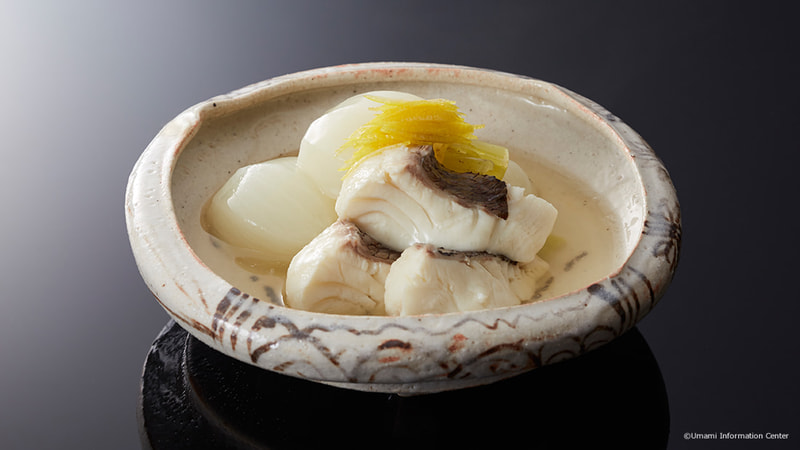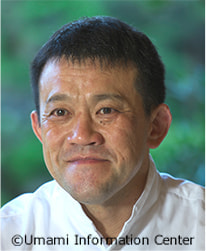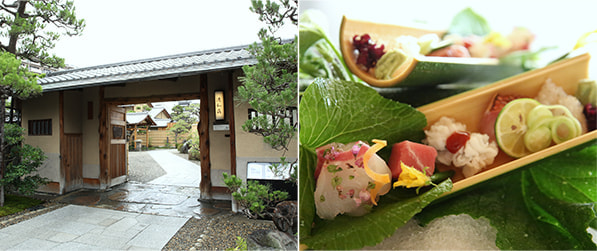SIMMERED SEABREAM
- Umami in Washoku
- Autumn
August 2020

- The chef simmered seabream and seasonal small turnips. With a little time and effort, the dish tastes much more delicious.Yuzu lets us know autumn is coming.
■ Ingredients( for 4 persons )
- 1 seabream backbone
- 4 slices (30g each) seabream
- 2 (120g) small turnips
- Some yuzu skin
- 1L water
- 100cc sake
- 2g kombu
- 1/2〜1 tsp mirin
- 1/2〜1 tsp light soy sauce
- 1/5〜1/4 salt
■ Recipes
- 1. Grill the seabream backbones, taking care not to burn them for about 10 minutes at 160℃ in an oven.
(In case of no oven: Sprinkle salt making up 1% of the seabream for 10 minutes. Wash them and put in a ball. Pour boiling water on them. Then immerse them in cold water and remove bloody and sticky part. Strain it with a strainer.) - 2. Put 1 in a pan. Add water, sake and kombu to them. Let them boil and simmer, taking off the froth for about 30 minutes. Strain them.
- 3. Peel off the skin of the turnips at a depth necessary to remove the hard fiber part beneath the skin. Cut it lengthways.
- 4. Spread the seabreams on a perforated basket. Splash boiling water on them.
When the surface of the seabreams have turned white, immerse them in cold water.
(This method is called shimofuri.) - 5. Put dashi (2) in a pan. Add the turnips and seabream slices and let them boil.
After boiling, simmer them at a low heat for about five minutes. - 6. Add mirin, light soy sauce and salt to taste. Continue to heat for 10 minutes more.
When the turnips are cooked well, place in a dish. - 7. Add yuzu on the top. (tenmori)
<Profile>

Tetsuo TAKENAKA
Third generation owner of Traditional Kyoto Cuisine Seiwaso
Born in 1963 in Fushimi, Kyoto, Japan. Graduated from Doshisha University, he was trained at the traditional Japanese restaurant “Tsuruya” for three years. Then he took over his family’s restaurant “Seiwaso”. He also plays a lively part as a member of Japanese Culinary Academy (Nonprofit organization), disseminating information about washoku in the US, Spain, France, Italy, Vietnam and so on. In addition, he is dedicated to shokuiku, food education for members of society, including children centering on the umami taste.
<Store information>

Traditional Kyoto Cuisine Seiwaso
The name Fushimi derives from a word meaning “abundant water,” and the area is blessed with sake breweries. Seiwaso started the business in Fushimi, and it celebrates its 61st anniversary this year. Their Kyoto cuisines are full of seasonal ingredients and umami-rich dashi. Customers can enjoy their delicious dishes in a traditional sukiya style of building. The chef sources traditional Kyoto vegetables from neighboring farms and obtains the finest seafood and other fresh ingredients both locally and from all over Japan.
Restaurant Website
